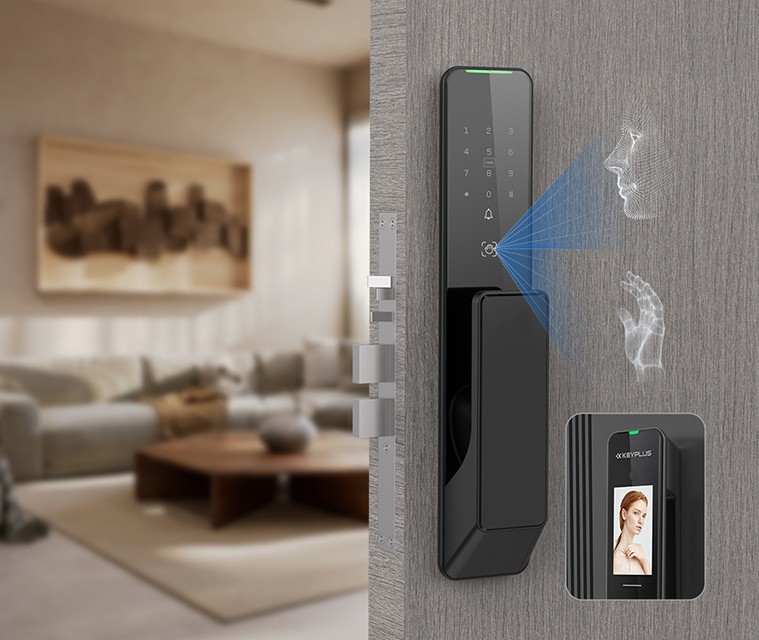Which Smart Lock Is the Most Secure?
Smart locks offer convenience, keyless entry, and remote access control—but not all are equally secure. For American homeowners, choosing the right smart lock means balancing advanced technology with robust security features. With rising concerns over hacking, physical break-ins, and lock-picking, understanding which smart lock provides the best protection is essential. This guide examines the key security features to look for and compares different types of smart locks to help you make an informed decision.
1. Key Security Features to Look for in a Smart Lock
Not all smart locks are created equal, and security should be the top priority. Here are the most important features to consider:
- Encryption & Cybersecurity: A secure smart lock should use AES 128-bit or 256-bit encryption to prevent hackers from intercepting Bluetooth or Wi-Fi signals.
- Physical Tamper Resistance: Look for locks with anti-pick, anti-drill, and anti-bump mechanisms. Deadbolts with Grade 1 ANSI certification (the highest security rating) are the most resistant to forced entry.
- Two-Factor Authentication (2FA): Smart locks with 2FA (like a fingerprint + PIN or a mobile app confirmation) add an extra layer of security against unauthorized access.
- Auto-Locking & Alerts: A good smart lock should automatically relock after a set time and send real-time alerts if someone tampers with it.
Avoid cheap, no-name brands that lack these security certifications—opt for reputable manufacturers with a track record of reliability.
2. Types of Smart Locks: Which Is the Most Secure?
There are several types of smart locks, each with pros and cons in terms of security:
- Keypad Smart Locks (Best for Keyless Security): These locks use PIN codes instead of physical keys, eliminating the risk of lock picking. However, weak codes (like “1234″) can be guessed. Choose models with one-time codes or scramble keypads (where numbers shift positions to prevent fingerprint smudges from revealing the code).
- Biometric Smart Locks (Most Secure for Personal Use): Fingerprint or facial recognition locks are highly secure because they rely on unique biological traits. However, some cheaper models can be fooled by high-quality replicas.
- Wi-Fi/Bluetooth Smart Locks (Convenient but Hackable): While Wi-Fi-enabled locks allow remote access, they can be vulnerable to cyberattacks if not properly encrypted. Bluetooth-only locks are more secure since they require close proximity.
- Keyed Smart Locks (Traditional but Risky): Some smart locks still include a physical keyhole, which can be picked or bumped. If you prefer a backup key, ensure the lock has pick-resistant cylinders.
For maximum security, a biometric or keypad lock with ANSI Grade 1 certification is the best choice.
3. How to Prevent Smart Lock Hacking & Break-Ins
Even the most secure smart lock can be compromised if not used correctly. Follow these best practices:
- Regular Firmware Updates: Hackers exploit outdated software. Enable automatic updates or manually check for them every few months.
- Strong, Unique PINs: Avoid obvious codes like birthdays or repeating numbers. Use at least 6 digits and change them periodically.
- Disable Unnecessary Features: If your lock has voice control (Alexa/Google Assistant), disable it unless needed, as hackers can exploit these connections.
- Install a Security Camera Nearby: A doorbell camera (like Ring or Nest) deters thieves and alerts you if someone tries to tamper with the lock.
Additionally, avoid sharing digital keys with too many people, and revoke access for guests or service workers once they no longer need entry.
4. Recommend a smart lock with the highest security
KEYPLUS KX3 PRO Face, Palm Vein, Cat Eye, Video Intercom, Screen Smart Lock
- KX flagship ultra-thin panel (12mm) integrated panel design;

- Cat Eye video intercom, inner door with visual screen
- Equipped with FPC fingerprint, international version 3D face, palm vein high-security biometric recognition technology
- Patented built-in large-capacity lithium battery design, charging circuit design, low power consumption, high security, long life
- Tuya Smart APP full registration
- Eight languages available
- Stainless steel high-protection grade fully electric lock body, automatic induction locking and real-time monitoring of door lock status
- One-button opening inside the door and child lock function can be set
- Can be linked with iron door locks or building intercom equipment
- Google Home, Alexa smart speaker linkage
Final Verdict: Go for a Grade 1 Certified Lock with Biometric or Keypad Entry
For the highest security, choose a biometric or keypad smart lock with ANSI Grade 1 certification and strong encryption. Avoid locks with weak cybersecurity or easily bypassed keyholes. By selecting a reputable brand and following best practices, you can enjoy the convenience of a smart lock without sacrificing safety.
Investing in a secure smart lock not only protects your home but also gives you peace of mind—whether you’re at work, on vacation, or simply inside relaxing. Stay smart, stay safe!
Post time: May-09-2025

